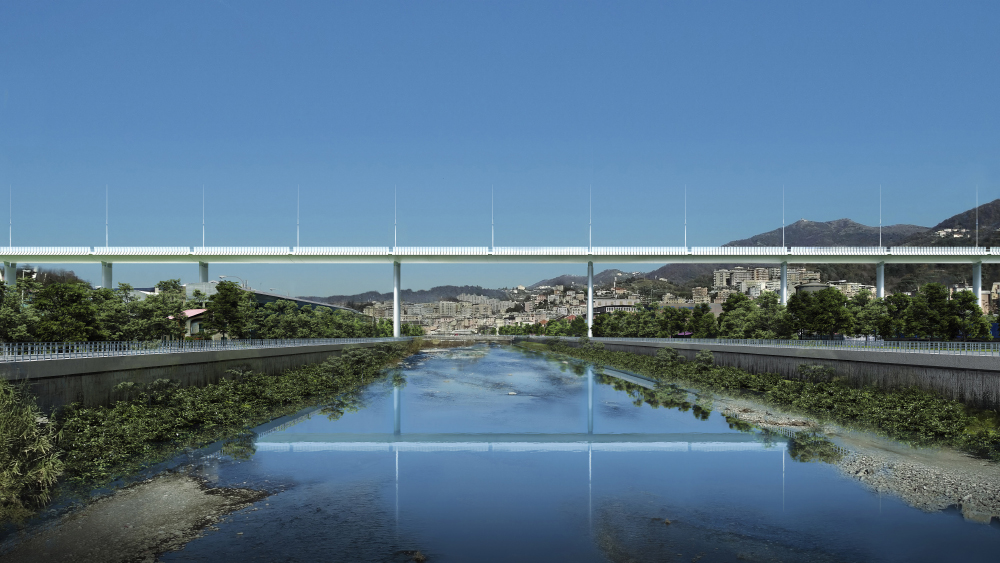In an emotionally charged ceremony, the first span of the new bridge in Genoa, Italy was lifted into place 50m above ground on 1 October, a milestone in the effort quickly to replace the Morandi Bridge, which collapsed in August last year, killing 43 people.
Italian Prime Minister Giuseppe Conte and other senior government ministers attended to watch as two giant cranes lifted the 50-metre-long span, weighing 500 tonnes, onto piers 5 and 6 of the structure, which is being built over the Polcevera river by a consortium of contractors Salini Impregilo and Fincantieri Infrastructure, called Pergenova.
It was deemed a highly symbolic moment because it commemorated the tragedy on 14 August 2018 and signalled a new start for Genoa and the country, the contractors said.
Salini Impregilo chief executive Pietro Salini used the occasion to criticise Italy for its large number of stalled infrastructure projects, and praised the bridge for its built-in technology.
Fincantieri chief executive Giuseppe Bono called the consortium’s work an “act of gratitude”.
“We have kept a promise made less than twelve months ago. That is, to work well, and to work quickly,” he said. “We have made it as an act of gratitude for a city we consider home, we are a Genoese company, and we have this land in our DNA.”
He added that more than 1,000 people from all over the country are working on the bridge, designed by Renzo Piano. Speed is necessary because the bridge that collapsed was a crucial transport link for the region and the country.

Render of the Renzo Piano-designed bridge over the Polcevera river (Pergenova)
Renzo Piano has said the bridge, whose total span will be 1,067m, “will have to be simple and parsimonious, but not trivial”.
Scolding his country for stalled infrastructure projects, Salini Impregilo’s Pietro Salini said the collaboration and “spirit of collective initiative” at work on this project should be exported as a model to the rest of Italy.
“This is considered the country of blocked construction sites,” he said. “We have 36 billion euros in works blocked in Italy – this means having jobs, development, growth of young people blocked as well. Yet, this work shows that infrastructures can be built in Italy. And that they can be done quickly and transparently, while maintaining a very high quality standard.”
Salini called it a “hyper-technological bridge”, referring to its built-in technology including automated sensor systems for monitoring and maintenance; a dehumidification system to prevent salt condensation and corrosion; photovoltaic panels to power the bridge’s lighting and sensor systems; and a database for constant monitoring, which could be used to inform future bridge design.
Over the coming months, 18 more spans will be lifted onto the bridge’s 18 elliptically-shaped, reinforced concrete piers.
Top image: Consortium Pergenova lifted the first span of the new bridge on 1 October 2019 (Still from a Pergenova video)










